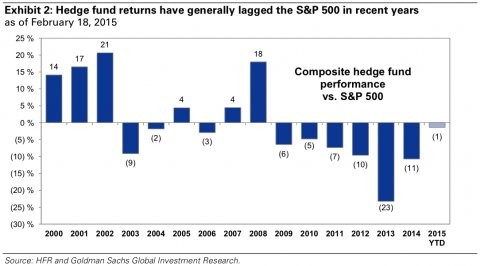Hedge Fund Wannabes
Post on: 16 Май, 2015 No Comment

By Zoe Van Schyndel, CFA | More Articles
September 11, 2006 | Comments (0)
If you have champagne tastes but a beer budget, hybrid mutual funds can represent a practical way to get hedge-fund-like exposure. One of the best performers in this category, Diamond Hill Focus Long/Short (DHFCX), has returns of 7.29% so far this year, and 17.93% and 9.93% for three and five years, respectively.
Hybrid mutual funds, which strive for absolute returns in all kinds of markets, are similar to hedge funds, since both have the ultimate goal of making money even if markets tumble. Hybrid funds seek absolute returns; they’re not focused on beating a particular benchmark. This emphasis on returns can make hybrid funds volatile, so they aren’t for everyone.
Like traditional funds, hybrid funds own stocks or bonds. These funds may also bet that share prices will fall, using hedge fund techniques such as shorting stocks, as a way to profit from declines in the stock market.
Depending on the criteria used, there are more than 50 hybrid funds to choose from. Yet many of the hybrid funds with the best long-term records are closed to investors, limiting the options for those who seek a proven performer. Even if you meet the financial requirements necessary to invest in hedge funds, it might be worth comparing their advantages and disadvantages to those of hybrid funds.
Advantages
The typical hedge fund has an entry fee of $1 million. That’s a high hurdle, and hybrid mutual funds have reduced that barrier significantly. Although some hybrid funds require investors to pony up $25,000 or more, many funds now offer various classes of shares, with minimums as low as $1,000. Unfortunately, these lowered entry barriers usually accompany higher fees. Investors should also note that some of these funds require investors to be accredited, which means that you must have at least a $1 million net worth or an annual salary of $200,000 to invest.
Hybrid funds have some other advantages over hedge funds, including liquidity, lower fees, and more oversight and regulation.
One very significant difference between hedge funds and mutual funds is the ability to get your money. Mutual fund investors have access to the net asset value of their fund on a daily basis, either by phone or the Internet. Investors can withdraw or add money on a daily basis. Most hedge funds have significantly longer periods during which investors cannot get their money — in some cases two or more years — making them a very illiquid investment.
The typical hedge fund charges a 2% annual fee and takes 20% of any profits. Although some of the hybrid mutual funds charge hefty annual fees, they don’t take a cut of the profits, so the overall fee level remains below that of most hedge funds.
Mutual funds have to register with the SEC. Although there are a handful of SEC-registered hedge funds, they are the exception, since they’re not required to register. SEC registration means that hybrid mutual funds must disclose certain information periodically, which makes the funds more transparent than hedge funds. The SEC also conducts reviews of mutual fund operations. Finally, being SEC-registered means that mutual funds cannot leverage as much as hedge funds, so these funds can be less risky.
Specific funds
If you’re looking for a long-short fund with good returns and a track record greater than three years, then the universe gets shortened considerably, no pun intended. Of the funds that make this cut, many are no longer open to investors; those that are can carry hefty fees. Some of the funds do have a menu of share classes, so investors with more money to put into the fund can obtain lower fees.
Templeton Global Long-Short (TLSAX) has a return so far this year of 7.48%, a three-year return of 7.44%, and a five-year return is 5.45%. To buy into this fund, you need $10,000, and you must pay a 5.75% load. In addition, the fund has an annual expense ratio of 1.23%. The fund can have both long and short positions in equity securities located anywhere in the world, including developing or emerging markets. Its top 10 holdings are broadly distributed among U.S. European, and Asian companies, and each ranges between 2% and 2.84% of the portfolio.
The Diamond Hill Focus Long/Short, mentioned above, goes long on stocks that its managers like, and it shorts those seen as overvalued. Although there is no initial sales load, the fund does have a 1% percent deferred sales charge, and its expense ratio is a costly 2.3%.

The fund’s class A shares (DIAMX), on the other hand, have a 5% Sales load, 1.78% expense ratio and require a $10,000 investment. This class of shares may be purchased with no loads through Charles Schwab or another mutual fund supermarket.
This fund invests in a core of 20 to 30 companies, giving it a very concentrated portfolio. The top five holdings make up just more than 22% of the fund, including four energy firms and one copper-mining company, all traded on the NYSE: Anadarko Petroleum ( NYSE: APC ). Apache ( NYSE: APA ). Phelps Dodge ( NYSE: PD ). Devon Energy ( NYSE: DVN ). and Cimarex Energy ( NYSE: XEC ). In addition, the fund has slightly more than 30% of its net assets in short securities. Like the Templeton offering, there’s a $10,000 minimum to get into the fund.
If the fees and expense of the other funds put you off, Hussman Strategic Growth (HSGFX) might be a better option. This fund has an expense ratio of only 1.24%, no front or deferred load, and a minimum investment is only $1,000. HSGFX has a return of 3% so far this year and respectable three- and five- year returns of 6.23% and 10.41%. The fund also has a different sector breakdown than the others mentioned here, with health care at 22% and consumer goods at 19%, while non-U.S. stocks are roughly 15% of the portfolio.
Just right for you?
Whether these hybrid funds are right for you will depend on your particular circumstances, and the returns and risks with which you’re comfortable. Like traditional hedge funds, hybrid funds can use various investments, like short sales, commodities, and options. These investments can be attractive, but they can also increase the funds’ potential risk. In addition, some funds’ aggressive trading can increase your taxes, if you hold them in a taxable account. Hybrid funds are an interesting investment option, but you should make sure these funds fit your goals and objectives before you invest.
If you’re purely focused on high returns, the Diamond Hill Focus fund would be worth further examination in this category. I prefer to avoid high fees, though, so I’m more inclined to consider Hussman Strategic Growth. Overall, this category of mutual fund seems expensive to me. When an expense ratio of 1.24% looks cheap, I start to get uncomfortable — and index funds start to look especially appealing.
Looking for more well-managed, inexpensive, high-performing mutual funds? Try Motley Fool Champion Funds free for 30 days.
Fool contributor Zoe Van Schyndel lives in Miami and enjoys the sunshine and variety of the Magic City. She does not own shares in any of the funds or companies mentioned in this article. The Motley Fool has a disclosure policy .














